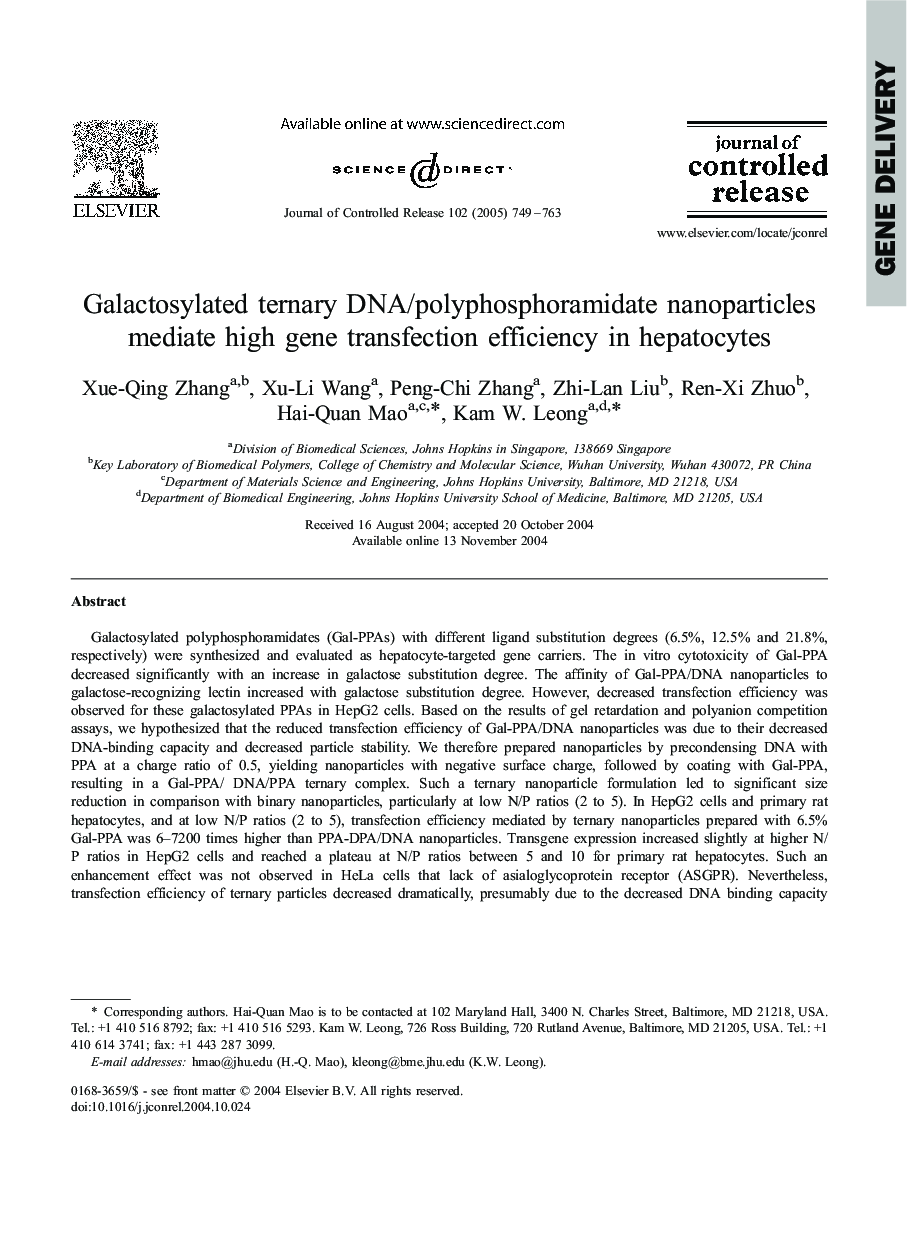| Article ID | Journal | Published Year | Pages | File Type |
|---|---|---|---|---|
| 10613464 | Journal of Controlled Release | 2005 | 15 Pages |
Abstract
Galactosylated polyphosphoramidates (Gal-PPAs) with different ligand substitution degrees (6.5%, 12.5% and 21.8%, respectively) were synthesized and evaluated as hepatocyte-targeted gene carriers. The in vitro cytotoxicity of Gal-PPA decreased significantly with an increase in galactose substitution degree. The affinity of Gal-PPA/DNA nanoparticles to galactose-recognizing lectin increased with galactose substitution degree. However, decreased transfection efficiency was observed for these galactosylated PPAs in HepG2 cells. Based on the results of gel retardation and polyanion competition assays, we hypothesized that the reduced transfection efficiency of Gal-PPA/DNA nanoparticles was due to their decreased DNA-binding capacity and decreased particle stability. We therefore prepared nanoparticles by precondensing DNA with PPA at a charge ratio of 0.5, yielding nanoparticles with negative surface charge, followed by coating with Gal-PPA, resulting in a Gal-PPA/ DNA/PPA ternary complex. Such a ternary nanoparticle formulation led to significant size reduction in comparison with binary nanoparticles, particularly at low N/P ratios (2 to 5). In HepG2 cells and primary rat hepatocytes, and at low N/P ratios (2 to 5), transfection efficiency mediated by ternary nanoparticles prepared with 6.5% Gal-PPA was 6-7200 times higher than PPA-DPA/DNA nanoparticles. Transgene expression increased slightly at higher N/P ratios in HepG2 cells and reached a plateau at N/P ratios between 5 and 10 for primary rat hepatocytes. Such an enhancement effect was not observed in HeLa cells that lack of asialoglycoprotein receptor (ASGPR). Nevertheless, transfection efficiency of ternary particles decreased dramatically, presumably due to the decreased DNA binding capacity and particle stability, as PPA galactosylation degree increased. This highlights the importance of optimizing ligand conjugation degree for PPA gene carrier.
Related Topics
Physical Sciences and Engineering
Materials Science
Biomaterials
Authors
Xue-Qing Zhang, Xu-Li Wang, Peng-Chi Zhang, Zhi-Lan Liu, Ren-Xi Zhuo, Hai-Quan Mao, Kam W. Leong,
